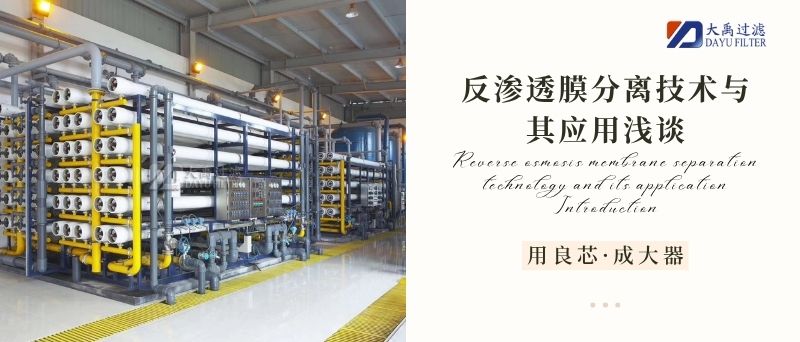
With the requirements of industrial and agricultural development, social development requirements, environmental protection awareness and standards, membrane separation as a new high-tech environmental protection technology has been more and more attention by the relevant departments. Membrane separation process for a new separation, concentration, purification technology, is to external energy as the driving force, by virtue of the components of the selective difference in the mass transfer in the membrane, the multi-component fluid separation, grading, purification and enrichment of the way, it is a large class of technology in general, the conventional and the liquid treatment of membrane technology, including microfiltration (MF), ultrafiltration (UF), nanofiltration (NF), reverse osmosis (RO), and electrodialysis (ED). ), and electrodialysis (ED). These membrane separation technologies all utilize specially manufactured porous materials to selectively separate water and impurities in water to achieve people's specific purposes. This paper focuses on the research and analysis of reverse osmosis (RO) technology and its applications.
The basic principle of membrane separation
The separation membrane is selectively permeable, so it allows some mixed substances to pass and some to be retained. It differs from conventional filtration in that the separation membrane can separate in the molecular range and the process is a physical one. However, with different membrane separation processes, the principles by which they allow substances to be retained and passed through are either similar or completely different. In general, separation membranes can separate substances that are mixed together by no more than two means, i.e., according to the difference in the physical properties of the mixture or according to the difference in the chemical properties of the mixture.
The process and characteristics of membrane separation
The membrane is made into a configuration suitable for use, and the driving equipment (pressure pumps, or electric fields, or heaters, or vacuum pumps), valves, instrumentation and piping, etc., into a device, under certain process conditions, can come to the separation of an aqueous solution or a mixture of gases.
The component that passes through the membrane is called the permeate stream, and this separation technology is called membrane separation technology. The driving force of material selection through the membrane can be divided into two categories: one is with the help of external energy, the material occurs from the low level to the high level of flow; the second is the chemical potential difference as the driving force, the material occurs from the high level to the low level of flow. For a new type of high-tech technology, membrane separation has high efficiency, low energy consumption; separation temperature in the vicinity of room temperature, equipment control is simple; easy maintenance, stable operation; scale and processing capacity range is very large, small equipment size, occupies an area of less and so on, and thus also make it more and more attention, in the market share is also increasing year by year, the application range is more and more extensive.
Conventional Membrane Separation
Membrane separation is a way of separating, classifying, purifying and enriching two-component or multi-component solutes and solvents by using natural or synthetic polymer membranes with external energy or chemical potential difference as the driving force. At present, the conventional membrane separation mainly includes: microfiltration, ultrafiltration, nanofiltration, reverse osmosis, electrodialysis and so on.
Application of reverse osmosis membrane in wastewater treatment
Reverse osmosis is the finest filtration technology available. Reverse osmosis membrane can block all dissolved inorganic molecules as well as any organic matter with relative molecular mass greater than 100, while water molecules can pass through the membrane to become pure water. Its removal rate of divalent ions in water can reach up to 99.5%, and the removal rate of monovalent ions is also above 95%.




